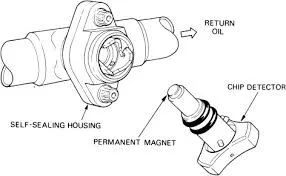Dec . 09, 2024 23:57 Back to list
Understanding the Force Characteristics of Hydraulic Cylinder Manufacturers' Products
Understanding the Force of Hydraulic Cylinder Manufacturers
Hydraulic cylinders are essential components in various industrial machinery, construction equipment, and automotive applications. They convert hydraulic energy into mechanical force, making them the cornerstone of many operations that require precise movement and substantial lifting capability. Understanding the force generated by hydraulic cylinders is crucial for engineers and manufacturers alike, especially those involved in the production and design of these devices.
What is Hydraulic Force?
At its core, the force exerted by a hydraulic cylinder is determined by the principles of hydraulics, specifically Pascal’s Law which states that pressure applied to a confined fluid is transmitted undiminished in all directions. The fundamental formula used to calculate the force output (F) of a hydraulic cylinder is
\[ F = P \times A \]
Where - \( F \) is the force in pounds (or Newtons), - \( P \) is the fluid pressure in pounds per square inch (psi) or Pascals, - \( A \) is the cross-sectional area of the cylinder’s piston in square inches (or square meters).
This relationship highlights the critical factors influencing the force output the pressure of the hydraulic fluid and the area of the piston.
Influence of Hydraulic Cylinder Design
Hydraulic cylinder manufacturers understand that various aspects of design significantly impact the generated force. The cross-sectional area of the piston is vital – larger piston areas will result in greater force outputs, assuming constant pressure. However, the design must also consider the operational requirements and space limitations of the application. Therefore, manufacturers often customize cylinder sizes and shapes based on specific project needs.
force of a hydraulic cylinder manufacturers

The type of hydraulic fluid used can also influence force output and efficiency. Different fluids have varying viscosities and hydraulic characteristics; hence, the choice of fluid can affect the efficiency of force transmission within the system. Moreover, maintenance of the hydraulic system, including regular checks on seals and hoses, is essential to ensure that the system operates effectively without leaks that could diminish pressure and, thus, force.
The Role of Pressure in Force Generation
Hydraulic systems rely on pumps to create pressure. Therefore, manufacturers must carefully select the type and capacity of the hydraulic pump in conjunction with the cylinder. The pressure within the system can be modified based on the needs of the application, and understanding the relationship between pressure and force allows for optimized function.
It's worth noting that hydraulic cylinders can operate under various pressures, typically ranging from several hundred to several thousand psi. The ability to endure high pressure is a crucial consideration in the design and material selection for hydraulic cylinders. Manufacturers must employ strong materials and construction techniques to ensure durability and safety during high-pressure operations.
Applications of Hydraulic Cylinders
The versatility of hydraulic cylinders makes them suitable for wide-ranging applications, from industrial machinery such as excavators and loaders to simple tasks like operating doors and equipment in automotive industries. Each application may require a different configuration, pressure rating, and piston size, highlighting the importance of customizable solutions from hydraulic cylinder manufacturers.
In heavy industries, the demand for high-force hydraulic cylinders is significant. For example, construction equipment often requires cylinders that can lift and lower heavy loads safely and reliably. In such cases, manufacturers must ensure that their products meet rigorous safety standards while providing the necessary power.
Conclusion
In conclusion, the force generated by hydraulic cylinders is a complex interplay of design, material selection, hydraulic fluid characteristics, and operational conditions. Manufacturers play an essential role in this ecosystem, providing tailored solutions that meet the diverse needs of various industries. By understanding the fundamental principles of force generation in hydraulic cylinders, engineers and manufacturers can collaborate effectively to innovate and streamline operations that rely heavily on this vital technology. Whether it's maximizing efficiency in construction machinery or improving performance in industrial applications, the principles governing hydraulic force continue to drive advancements in engineering and manufacturing practices.
-
Fork Lift Power Units - Hebei Shenghan | Efficiency, Reliability
NewsJul.13,2025
-
1.5-Ton Turbocharged Cylinder-Hebei Shenghan|Hydraulic Solution,Energy Efficiency
NewsJul.13,2025
-
Auto Hoist Power Units-Hebei Shenghan|Efficiency&Industrial Lifting
NewsJul.13,2025
-
Double Acting Power Units-Hebei Shenghan|Hydraulic Solutions,Industrial Efficiency
NewsJul.13,2025
-
1.5 Ton Lifting Cylinder 70/82-40-290-535 - High-Performance Hydraulic Solution | Hebei Shenghan
NewsJul.13,2025
-
Fork Lift Power Units - Hebei Shenghan | Efficiency&Reliability
NewsJul.13,2025
